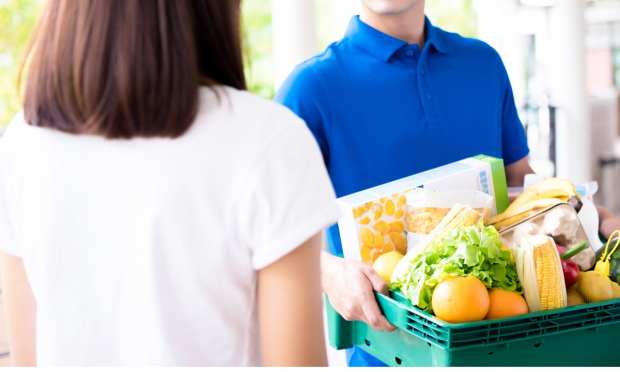How We Will Eat: 2021 Promises To Bring A Digital Appetite

A PYMNTS staffer recently placing a digital order from New England regional grocery chain Big Y noticed a surprising change to the supermarket’s online options. Customers could order groceries for delivery by Instacart as usual, but the chain now offered prepared food delivered via DoorDash.
The lineup was about what one would expect from a grocery store’s prepared-foods section: pizza, subs, chicken tenders and wings. But what was surprising was the offer being there at all.
Historically, grocers focused on delivering ingredients. Ordering prepared meals had heretofore been the provenance of restaurants, not grocery stores.
But not anymore.
While that’s just a small example at a regional grocery chain, it does point to the fact that the world of eating might never quite be the same because consumer tastes have migrated fairly dramatically. We all still like pizza and wings, but as a group, consumers are considering where they’ll order them from quite a bit more widely. And they have vastly evolved preferences when it comes to ordering, picking up their meal and paying than they’ve ever had before.
True, PYMNTS/PayPal data confirm in many ways that consumers want to get back to “normal” when it comes to dining out. They miss the good old days.
In fact, according to the data, eating in restaurants is the only activity that consumers seem to be more eager to do in person now than they did in March. The share of consumers who say they plan to eventually go back to eating in restaurants has increased.
But that same data set and others indicate that even though they would very much like to get back to dining out and will certainly do so in a post pandemic world, consumers won’t completely get back to the old normal even when the pandemic is through. Now that digital spice is in the meal, so to speak, there’s no taking it back out again. How consumers will choose where and how they dine will never quite be the same.
The Digital Shift And Everything It Rewrote
When it comes to buying grocery items, the digital shift has been most apparent by the numbers.
By autumn 2020, consumers’ propensity for grocery shopping online was growing faster than their propensity for either retail shopping online or ordering food online. According to PYMNTS/Visa How We Will Pay data, three times as many consumers grocery-shopped from home in 2020 than they did in 2019. Some 76 million Americans — 30 percent of all consumers — are now shopping for groceries more using grocery apps than they did at this time last year.
And the shift to digital grocery has created an ancillary change to the timing of procuring grocery products. As of 2019, nearly three-quarters of Americans shopped for groceries on weekends. But as of 2020, that figure had dropped to 54 percent. Shoppers now ordering online and with the aid of voice assistants have time-shifted their grocery shopping to whenever it happens to be convenient for them.
Convenience As The Killer Offering
And in fact, if one looks at various shifts and blurrings of the line in the world of food, the overriding rules that seem set to carry over into 2021 and beyond are all united by the theme of serving up consumers convenience.
The latest edition of the PYMNTS Order To Eat Tracker showed that 38 percent of restaurants have added drive-thru capabilities and pushed restaurateurs to invest in things like artificial intelligence (AI) and digital menu boards.
That’s evidently what consumers are demanding. PYMNTS’ study found that nearly 92 percent of all top-performing restaurants offered mobile ordering and rewards programs.
Curbside pickup and online ordering via website were also highly desired features. Some 39 percent of consumers reported they would be more likely to spend if restaurants offered rewards, while 35 percent noted they would be more encouraged to spend if restaurants offered drive-thru pickup.
And perhaps most critically, 82 percent reported they will hold on to their newfound ordering habits even when the pandemic is over. As Steph So, Shake Shack’s head of Digital Experience, told PYMNTS in an interview, the change has been made and there’s no going back.
“Since the pandemic began, we have accelerated our digital investment,” she said. “I don’t see that slowing down.”
Consumers will go back out to dine in restaurants once the pandemic is passed and they get the all-clear on the health and safety front. But the return of one old habit does not a full return make. And given how much of their lives consumers have shifted and how much they have liked shifting, dining will likely be a rather digitized experience from here on out — and one tailored to the emerging version of consumer convenience.
